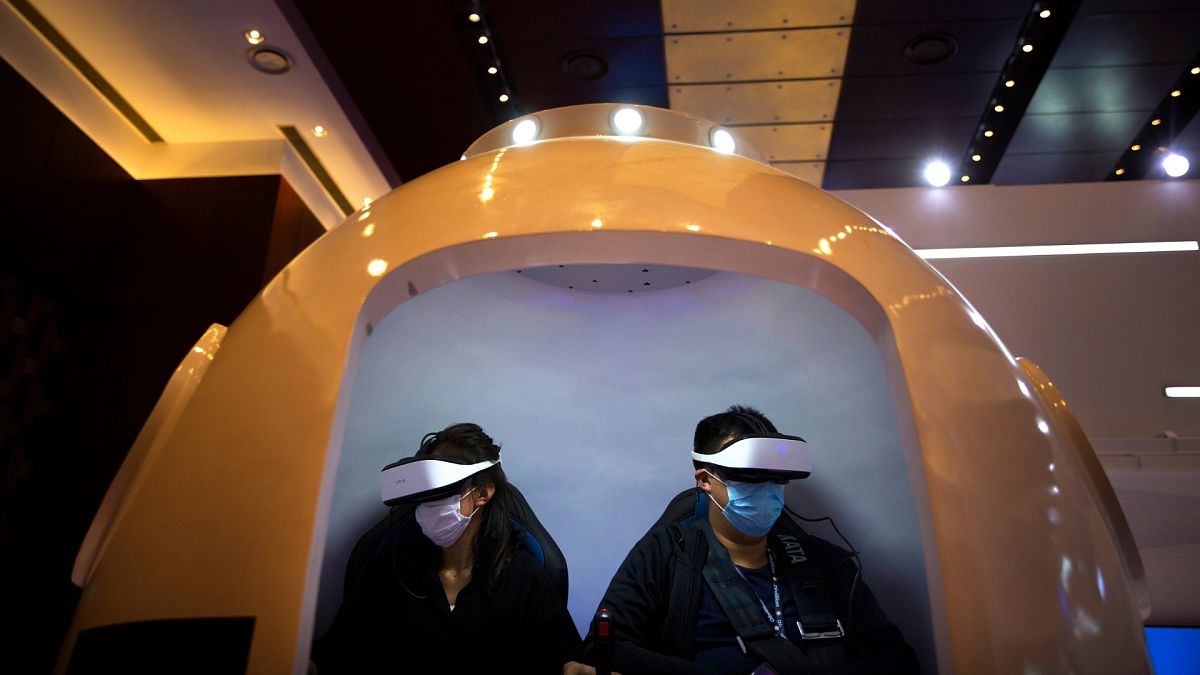A Japanese robotics company has invented a face mask that can translate across languages. We also take a look at other interesting pandemic innovations.
Sick of not hearing your friends clearly through their face masks? Imagine if you could understand them even if you didn’t speak the same language.
That’s possible now with new technology from a Japanese robotics company. Donut Robotics has created a face mask that can translate what you’re saying into different languages.
The company was started out of a garage in Fukuoka in 2014 by a group of engineers and designers.
Engineers wanted to develop robots that would “solve social problems” and named the company after the theories that the universe’s true shape is like that of a doughnut.
The translating face mask
Enter the C-FACE Smart Mask. This patent-pending device does far more than your average surgical mask can.
The mask links with your smartphone and can translate what you are saying into eight languages.
The mask listens to you and then the translation appears on the connected screen. It can also pair with people’s speakers to give a real-time spoken translation.
So far, the Smart Mask can translate English, Chinese, French, Korean, Indonesian Thai, Spanish and Vietnamese.
It’s a real-life equivalent of the babel fish, the device from Hitchhiker's Guide to the Galaxy that allows people to understand any language in the universe.
Judging by the English version of the company website, you can tell it’s been translated from Japanese. But it’s still easily understandable, which is a good sign for the mask’s translation capabilities.
And it works just as well as your usual masks at keeping COVID-19 particles at bay.
The C-FACE Smart Mask is the sort of invention that could make travelling easier than ever, by removing language barriers between communities.
The masks are expected to cost around €35.
The company first made its name with their smart robot, cinamon.
Cinamon is a cute little animatronic bot that can do everything from introducing guests to a restaurant to diagnosing the health of a user through their voice.
Adorable and useful as cinamon is, when the pandemic hit, Donut Robotics knew they wanted to make a solution to miscommunications through masks.
What are some other smart pandemic inventions?
Aside from the wonders of a language translating face-mask, we found these other great pandemic-inspired innovations.
Table shields to eat in safety
One clever pandemic invention is the Plex'Eat plastic shield created by French designer Christophe Gernigon.
Plex’Eat is a transparent plastic lamp shade that can be lowered over diners at a restaurant. The idea is to allow people to carry on eating as they would pre-pandemic without the fear of infection while your mouth is uncovered.
Although it’s unlikely the Plex’Eat will find much use post-pandemic, it shows how a global crisis doesn’t stifle innovation.
Another interesting addition to pandemic life is all the apps for ordering food from your table at a restaurant.
Yes, it can be annoying to download a new app, make a new account, and then enter your bank details for every new restaurant you go to. But there were huge benefits.
Ordering at restaurants which used to have bar service is now more accessible for wheelchair users, for example.
Out and about from the comfort of your couch
Estate agents have started to make video tours of properties a standard.
Virtual tours can give people a much better sense of whether they’d actually like to rent or buy a place.
It also helps you filter out all those horrible sheds-disguised-as-studio-apartments that plague city-dwellers.
Even more fun than a virtual house tour though is a virtual holiday.
Japan and France both created 360-degree tours of some of their top locations so you can scratch that travel itch even if you’re not yet able to fly.
Home theatres
One of our personal favourites is the creation of the National Theatre at Home library in London, UK.
Theatre-nerds were able to still watch recordings of their favourite plays from the comfort of their homes, when the stages shut up shop for the pandemic.
In what was, at first, just a pandemic measure, the theatre is keeping the service up and running, allowing people from all over the world to enjoy the best of British theatre without coughing up the cash to get to opening night.



